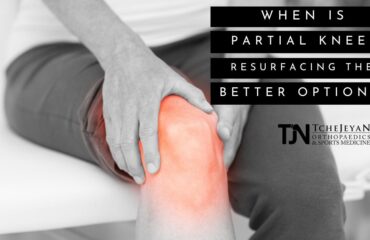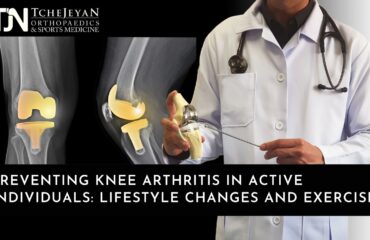Joint pain is a common ailment, especially among people who have led active lives or for athletes, dancers, and others who enjoy strenuous physical exercise. Unfortunately, the pain, when chronic, can significantly impede daily activities and diminish quality of life.
Among the treatment options available for joint pain, corticosteroid injections have emerged as a popular choice for many people, particularly those who experience pain in the primary weight-bearing joints — the knees and hips. Experiencing constant pain every time you move is not only unpleasant, it can force you into a more sedentary lifestyle, leading to a host of other health problems such as obesity and heart problems. Corticosteroid injections can alleviate that pain, allowing you to resume a more active lifestyle.
Corticosteroid injections are commonly employed for managing knee pain, especially in cases of osteoarthritis. The injections can directly target the affected joint, relieving pain and improving knee function. For hip joints, corticosteroid injections can be effective, but the anatomy of the hip joint poses challenges. The injection must be precisely administered to ensure optimal results, and the potential for complications, such as nerve damage, can introduce additional considerations for those considering injections.
Corticosteroid injections are not for everyone. Like most therapies, there are pros and cons to utilizing them, and it is important for people considering them to gain perspective on their effectiveness, potential risks, and other considerations.
Pros of Corticosteroid Injections
- Rapid Pain Relief: Corticosteroid injections offer swift relief from joint pain because they can immediately reduce inflammation. This quick response can be especially beneficial for individuals experiencing acute pain or those with conditions like osteoarthritis and rheumatoid arthritis.
- Minimally Invasive: Compared to surgical interventions, corticosteroid injections are minimally invasive. They can be administered during an office visit. The ease with which you can obtain relief makes injections attractive for individuals looking to manage joint pain without undergoing extensive procedures, particularly in the early stages of joint problems.
- Improved Functionality: By reducing inflammation and swelling, corticosteroids can enhance joint functionality. For weight-bearing joints like the knee and hip, improved mobility can significantly impact an individual’s ability to perform daily activities.
Cons of Corticosteroid Injections
- Temporary Relief: One of the primary drawbacks of corticosteroid injections is their temporary nature. While they can provide effective relief for weeks to months, the effects are not permanent. This necessitates repeated injections for sustained pain management, potentially leading to concerns about overuse.
- Risk of Side Effects: Corticosteroid injections are associated with potential side effects, including infection at the injection site, thinning of the nearby skin and soft tissues, and temporary elevation of blood sugar levels. Individuals, particularly those with pre-existing health conditions, should investigate and consider these risks carefully.
- Limited Frequency of Use: There are limits to the frequency with which corticosteroid injections can be administered due to concerns about long-term side effects. Overuse may lead to complications such as joint damage or weakened surrounding tissues, necessitating a prudent approach in their application. Most doctors will only allow the use of corticosteroid injections to treat pain up to four times per year, and some will limit their use even further.
The rapid relief that corticosteroid injections provide and their minimally invasive nature make them an attractive choice for individuals seeking to alleviate discomfort and improve joint functionality. However, the temporary nature of their effects, potential side effects, and limitations on frequency should be carefully considered. In many cases, those who have joint problems are merely buying time by getting injections, staving off the need to undergo a knee or hip replacement procedure. In some cases, the injections can help a person cope with a problem until a more convenient time to plan for joint surgery and the necessary recovery period.
If you are experiencing joint pain and considering corticosteroid injections as a potential solution, consult the experienced healthcare professionals at Tchejeyan Orthopaedics and Sports Medicine in Thousand Oaks, California. Dr. T specializes in comprehensive orthopedic care, especially for those who lead an active lifestyle and are seeking ways to preserve that lifestyle. Contact TJN Ortho today to learn more or schedule an appointment.



